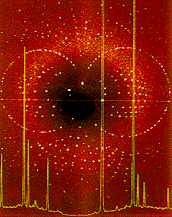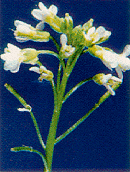
The University of Chicago Magazine
February 1997

Scientists have long known that myoglobin binds and stores oxygen in muscle tissue--but no one knew for certain how, since there's no obvious way for oxygen to get in and out of the protein molecule. Now, a "movie" of myoglobin at work, made with high-powered X rays and a pulsed laser, offers evidence to refine the theories. An international research team led by Keith Moffat, professor of biochemistry and molecular biology, conducted the experiments at France's European Synchrotron Radiation Facility. More such experiments--perhaps leading to improved drug designs--will be performed at Argonne National Laboratory's Advanced Photon Source, where Moffat will apply the APS's even more brilliant X rays to improve the time resolution by another factor of ten. At a December astrophysics symposium, gamma-ray bursts were the topic. A NASA observatory has recorded about 1,700 random gamma-ray bursts since 1991, but in two days in October, it detected four flashes from the same spot in the sky. That repetition may discredit a popular explanation for gamma rays: two neutron stars in the far-off universe colliding. But the repeating bursts seem to strengthen the model of Chicago astronomer Don Q. Lamb, who proposes that the flashes come from neutron stars inhabiting a halo around the Milky Way. In Lamb's scenario, "starquakes" and minor collisions with comets and asteroids could create gamma-ray bursts without destroying their source. How about some sterile mutant flowers for your ex? In a normal flower capable of fertilizing itself, male pollen granules land on the female pistil and grow tubes toward the eggs within to deliver their sperm. But in mutations of Arabidopsis thaliana (right), pollen tubes wander ineffectually about the pistil, unable to find and fertilize an egg. Daphne Preuss, assistant professor of molecular genetics and cell biology, and graduate student Laura Wilhelmi report in Science that the mutant phenotype reflects a combination of defects in--unusual for a flower--both the male and female tissues. Finding these mutant strains should help identify the elusive signaling molecules required for reproduction. No one knows how Hong Kong will weather its return to Chinese rule, but in a December Business Week column, economist Gary Becker, AM'53, PhD'55, offers "cautious optimism" about democracy's growth in China and argues that the takeover "will not be as devastating as predicted by many." Becker points to China's desire for continued economic growth--which, he says, requires free markets, better education, and global communications technology. Go to: Citations
Molecule in Motion.

Bursting onto the Scene.

Just in Time for Valentine's Day.

Future Holdings.

More Investigations:
Return to February 1997 Table of Contents